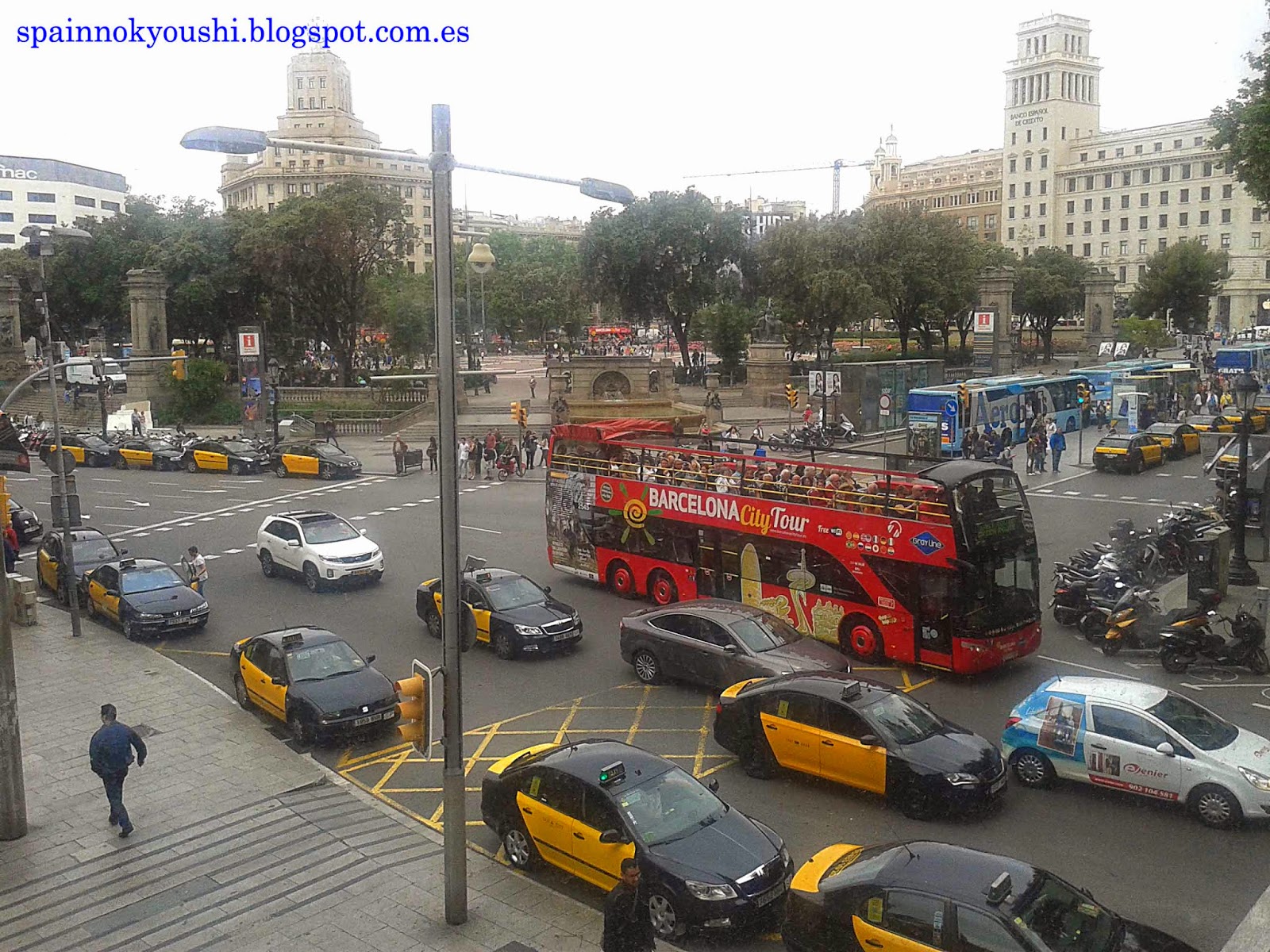サン・パウ・デル・カンプ(Sant Pau del Camp スペイン語ではサン・パブロ・デル・カンポ San Pablo del Campo)は、バルセロナで昔「チノ地区(Barrio Chino)」と呼ばれていた付近に建つ古いロマネスク修道院だ。チノ地区はランブラス通りをはさんでゴシック地区・ネオゴシック地区の反対側にあるが、細い路地や怪しげ連中が多い場所に使われるこの名称はイメチェンのため変更され、現在は「ラバル地区」と呼ばれている。社会的に排除された人々、貧しい人々は、いつの時代も「怪しげな連中」なのだ。
「デル・カンプ」という名前の由来は、この修道院が建てられた9世紀当時、バルセロナの城壁外に位置していたこの辺りがまだ田舎(Camp)だったから、と伝えられている。ベネディクト会の修道士にとっては危険な環境でもあった。事実、この修道院は9世紀と10世紀、イベリア半島南部からのイスラム派ゲリラにより2度荒らされている。
19世紀に教会財産の解放令が施行されると、修道院は放棄され、学校、のちに軍事宿舎となった。20世紀に入ると、1909年のセマナ・トラヒカ(Semana Trágica 悲劇の一週間)、市民戦争勃発年にあたる1936年に2度破壊されている。
現在この修道院は、結婚式に大人気のスポットだ。観光客はそれほど多くないが、ここはバルセロナ中心地にあるこぢんまりとしたロマネスクの宝。僕が一番好きな所は、天気のいい日に鑑賞する小さなロマネスク回廊と、教会の内部だ。あまり好きじゃないのは、十字架にはりつけられたハイパーリアリズムのキリスト像と、周囲の近代的市街地。この辺りの建物は、周辺のほとんどの近代建築と同じように、誰もが思い浮かべるあのハンバーガーチェーンの外観を思い起こさせる。
Un monasterio románico en un parque temático
Sant Pau del Camp (San
Pablo del Campo) es un antiguo monasterio románico situado en lo que antes
llamábamos el “Barrio Chino” de Barcelona, junto a las Ramblas, justo al otro
lado del Barrio Gótico o Neogótico. Ahora el “Barrio Chino” ya no se llama así.
Ahora se llama “Raval”, para intentar quitarle las connotaciones canallas que
tenía de barrio de calles estrechas y gente poco recomendable. La gente
socialmente excluida o muy pobre siempre es gente muy poco recomendable.
Se llama “del Camp”
(del Campo) porque, cuando se fundó en el siglo IX, efectivamente estaba en el
campo, fuera de las murallas de la ciudad de Barcelona. Eso fue un poco temerario por parte de los
monjes benedictinos, porque ese mismo siglo y el posterior fue arrasado dos
veces durante incursiones de guerreros musulmanes del sur de la península
ibérica.
Durante el siglo XIX una
ley arrebató a la iglesia sus propiedades y el monasterio fue abandonado. Más
tarde, fue escuela y cuartel militar, y en el siglo XX fue devastado otras dos
veces: durante las revueltas ciudadanas de la
Semana Trágica, en 1909, y en 1936, el año de inicio de la Guerra Civil
Española.
Ahora es una parroquia
muy solicitada para bodas, porque es una pequeña joya románica en el centro de
Barcelona, aunque no parece tener muchos visitantes. Lo que más me gusta es el
pequeño claustro románico en días soleados y el interior de la iglesia. Lo que
menos, ese Cristo clavado en la cruz hiperrealista y la estética moderna de la
urbanización de los alrededores, que como en la mayor parte de los edificios
nuevos del barrio y de la ciudad, me recuerdan la decoración de la cadena de
hamburgueserías que todos tenemos en la cabeza ahora mismo.
A Romanesque monastery
in a theme park
Sant Pau del Camp (Saint Paul in the
country) is an old Romanesque monastery situated in a part of Barcelona we used
to call «Barrio Chino» (redlight district) near the Rambles, just opposite the
Gothic or Neogothic Quarter. Now it is not called like that anymore. Now it is
called “Raval”, because they wanted to take away the awful meanings of that
name we used for district with plenty of narrow streets and people your mother
would not like to see you with. Socially excluded people or very poor people
are never good enough for you, are they? It
is called “del Camp” (in the country) because, when the monastery was founded
in the 9th century, it was in fact in the country, out of Barcelona city walls.
That was a bit bold back then from the Benedictine monks, because soon enough
in the same century and the next it was devastated twice during muslim warriors
raids coming from the south of the Iberian peninsula. During
the 19th century the Spanish government made a law to snatch the
Catholic Church properties and the monastery was abandoned. Later, it became a
school and then used as barracks, and in the 20th century it was
devastated again twice: during the 1909 city revolts called Semana Trágica, and then in 1936, at the
start of the Spanish Civil War.
Now
it is a parish where many marrying couples would like to celebrate their
wedding, because it is a little Romanesque jewel in the city centre. Not many
people visit it, though. I like the little Romanesque cloister on sunny days
and the inner part of the church. I am not very fond of the hiperrealistic
figure of Christ nailed on the cross and the «modern» aesthetics of the
urbanization around. The aesthetics of most new buildings and city elements
there and all over the city remind me of the decoration of that chain of fast
food restaurants we are thinking in right now.
.jpg)



+copy.jpg)
+copy.jpg)
.jpg)

+copy.jpg)



